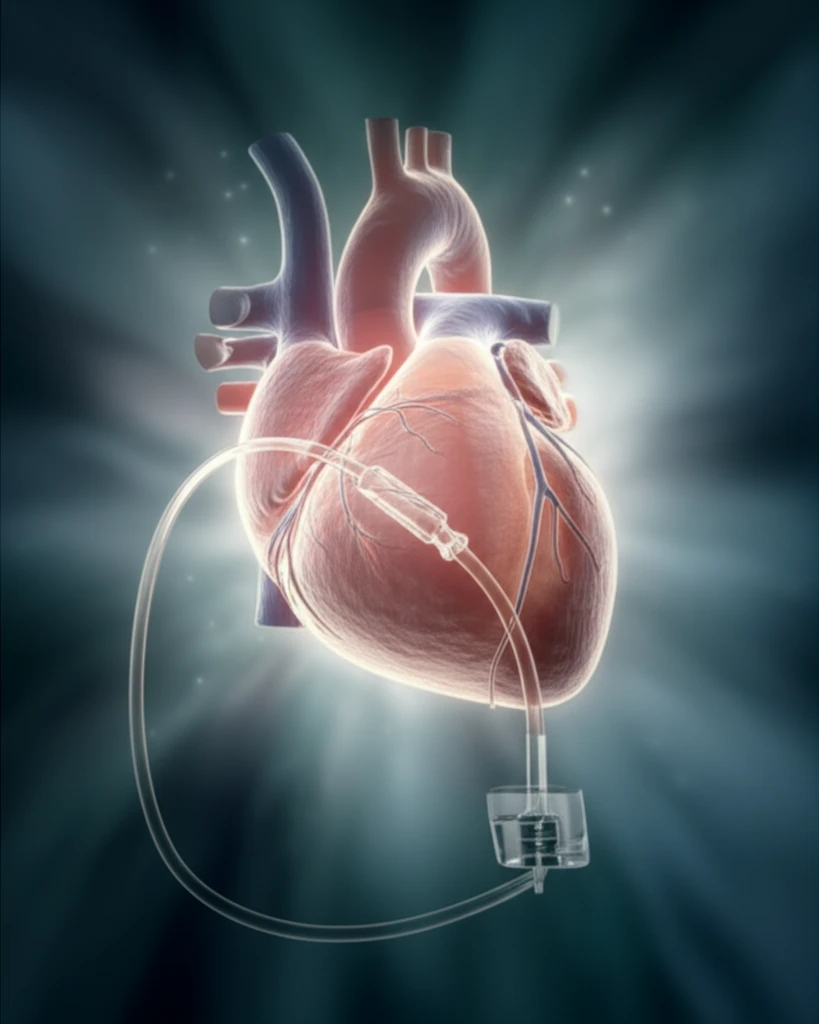
Clearing the Air: How Central Venous Catheters Offer New Hope After Heart Surgery
"Discover how a simple CVC procedure is changing the game for post-operative pericardial effusion management, reducing pain and improving recovery."
Open-heart surgery, while life-saving, can sometimes lead to unexpected complications. One of these is pericardial effusion, where fluid accumulates around the heart. This can cause discomfort, impact recovery, and in severe cases, lead to cardiac tamponade, a life-threatening condition. Traditionally, managing pericardial effusion has involved invasive procedures like pericardiocentesis or creating a pericardial window, but what if there was a less invasive, equally effective option?
A recent study published in the Journal of Pain Research sheds light on a promising alternative: the use of central venous catheters (CVCs) for managing pericardial effusion in patients undergoing coronary artery bypass graft (CABG) surgery. This approach offers a blend of safety, efficacy, and improved patient comfort, potentially revolutionizing post-operative care.
This article explores how CVCs are emerging as a game-changer in post-CABG recovery. We'll delve into the details of the study, understand the procedure, and highlight the benefits of this innovative approach, offering hope for a smoother recovery journey after open-heart surgery.
The CVC Advantage: A Gentle Approach to Drainage

The study, conducted between 2012 and 2015, prospectively assessed 55 patients who developed pericardial effusion after undergoing open-heart surgery. These patients, who hadn't responded to conventional treatments, were carefully evaluated to determine the effectiveness of CVCs in draining the excess fluid.
- Anesthesia: The insertion site (left xiphocostal area) is numbed with a local anesthetic.
- Guidewire Insertion: Using ultrasound, a needle is carefully inserted, followed by a guidewire.
- Catheter Placement: A central venous pressure catheter is advanced over the guidewire into the pericardial cavity.
- Securing the Catheter: The catheter is secured to the skin, connected to a drainage bag, and covered with a sterile dressing.
- Drainage Management: Patients are trained to monitor and drain the effusion, typically limiting drainage to 30 mL per day to prevent complications.
A Brighter Future for Post-Surgical Recovery
This study suggests that CVC insertion is a safe and effective alternative for managing pericardial effusion after open-heart surgery. Compared to more invasive techniques, CVCs offer a gentler approach, reducing patient discomfort and improving quality of life.
While the study highlights the promising potential of CVCs, further research is needed to compare this technique directly with other methods like pericardial window and balloon pericardiotomy. Additionally, future studies could explore the cost-effectiveness of CVCs and their application in different types of open-heart surgery.
The findings offer hope for a smoother recovery journey after open-heart surgery. By providing a less invasive and effective way to manage pericardial effusion, CVCs are paving the way for improved patient outcomes and a brighter future for cardiac care.
